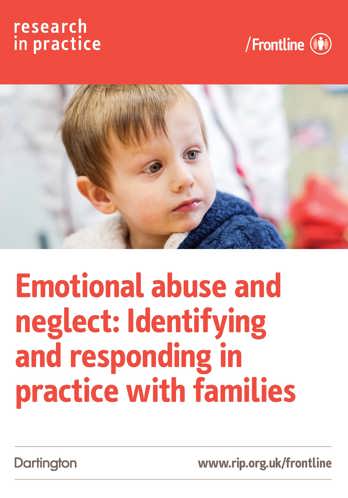Emotional abuse and neglect: Identifying and responding in practice with families: Chart (2014)
This chart accompanies the full briefing, which looks in detail at the issue of emotional abuse and neglect and its application to child welfare practice.
Reflective questions and practice implications
The chart provides a ‘rough guide’ to help practitioners reflect on the causes and broad categories of emotional abuse and neglect, and on the ‘FRAMEA’ care pathway.
- An assessment of parent-child interaction should be a part of the evaluation of any family in which child maltreatment is suspected, but is particularly important in the case of emotional abuse – which consists of repeated patterns of harmful interactions between parent and child, rather than specific events.
- How might the steps outlined in the FRAMEA model (Glaser, 2011) of assessment and treatment be incorporated into your practice to help identify and respond effectively to emotional abuse and neglect?
- Staff working in family support and child mental health specialists should be equipped with the necessary skills to work more ‘therapeutically’ with families if child emotional maltreatment is to be reduced.
Professional Standards
PQS:KSS - Communication | Child development | Abuse and neglect of children | Child and family assessment | Analysis, decision-making, planning and review
PCF - Rights, justice and economic wellbeing | Critical reflection and analysis | Intervention and skills | Values and ethics
This publication is a premium resource
Access the full publication with a one-off purchase or enjoy the benefits of membership.

